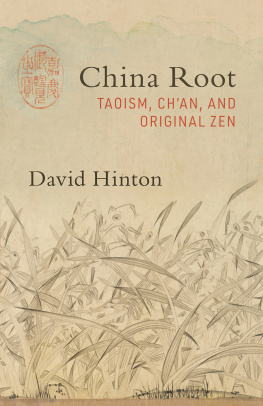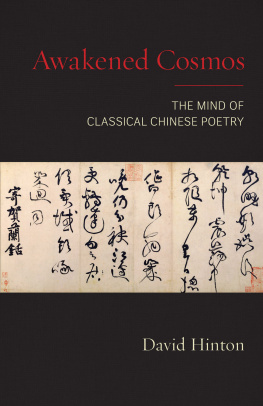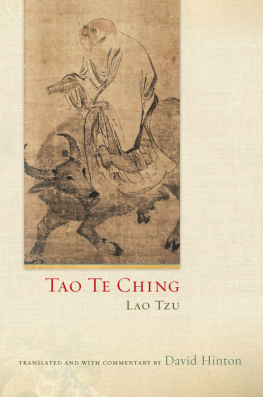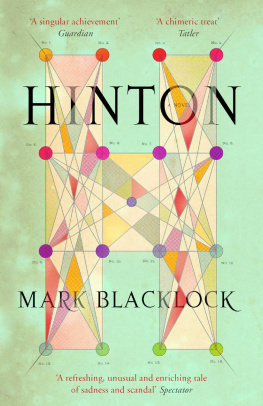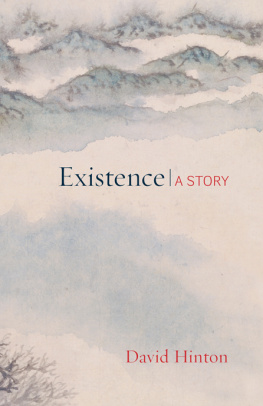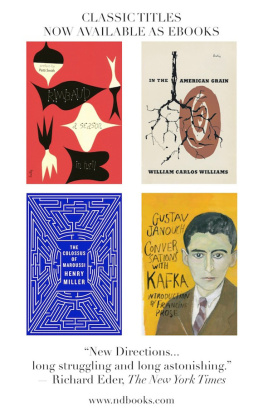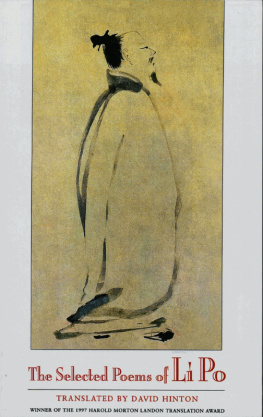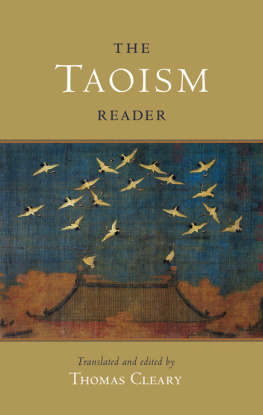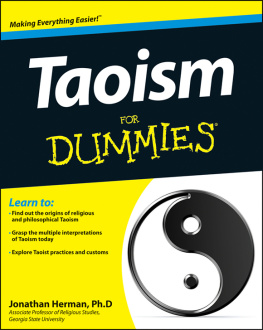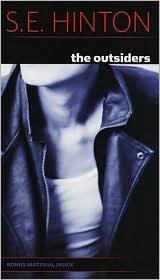David Hinton - China Root: Taoism, Ch’an, and Original Zen
Here you can read online David Hinton - China Root: Taoism, Ch’an, and Original Zen full text of the book (entire story) in english for free. Download pdf and epub, get meaning, cover and reviews about this ebook. year: 2020, publisher: Shambhala, genre: Religion. Description of the work, (preface) as well as reviews are available. Best literature library LitArk.com created for fans of good reading and offers a wide selection of genres:
Romance novel
Science fiction
Adventure
Detective
Science
History
Home and family
Prose
Art
Politics
Computer
Non-fiction
Religion
Business
Children
Humor
Choose a favorite category and find really read worthwhile books. Enjoy immersion in the world of imagination, feel the emotions of the characters or learn something new for yourself, make an fascinating discovery.
- Book:China Root: Taoism, Ch’an, and Original Zen
- Author:
- Publisher:Shambhala
- Genre:
- Year:2020
- Rating:5 / 5
- Favourites:Add to favourites
- Your mark:
- 100
- 1
- 2
- 3
- 4
- 5
China Root: Taoism, Ch’an, and Original Zen: summary, description and annotation
We offer to read an annotation, description, summary or preface (depends on what the author of the book "China Root: Taoism, Ch’an, and Original Zen" wrote himself). If you haven't found the necessary information about the book — write in the comments, we will try to find it.
China Root: Taoism, Ch’an, and Original Zen — read online for free the complete book (whole text) full work
Below is the text of the book, divided by pages. System saving the place of the last page read, allows you to conveniently read the book "China Root: Taoism, Ch’an, and Original Zen" online for free, without having to search again every time where you left off. Put a bookmark, and you can go to the page where you finished reading at any time.
Font size:
Interval:
Bookmark:
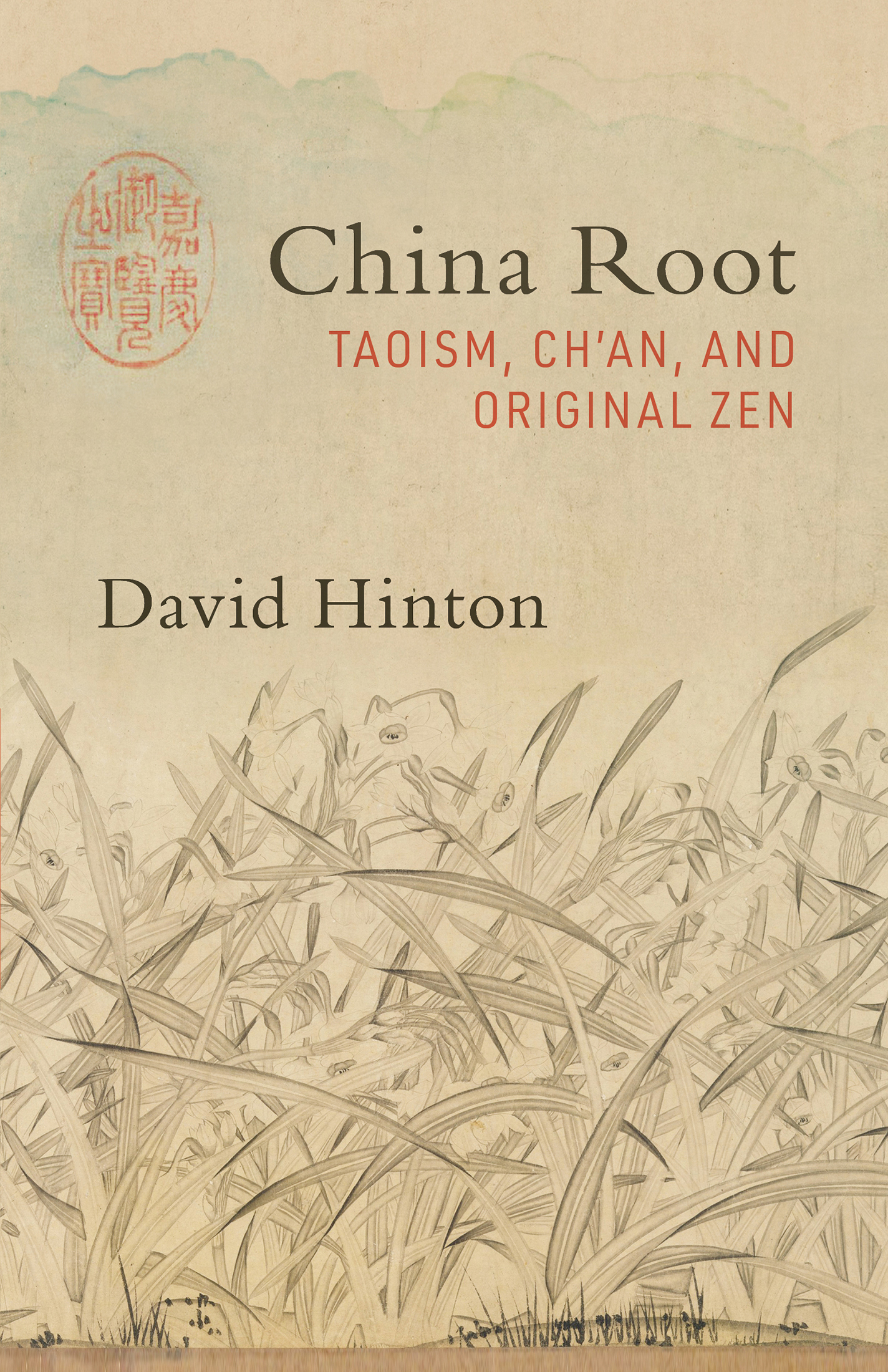
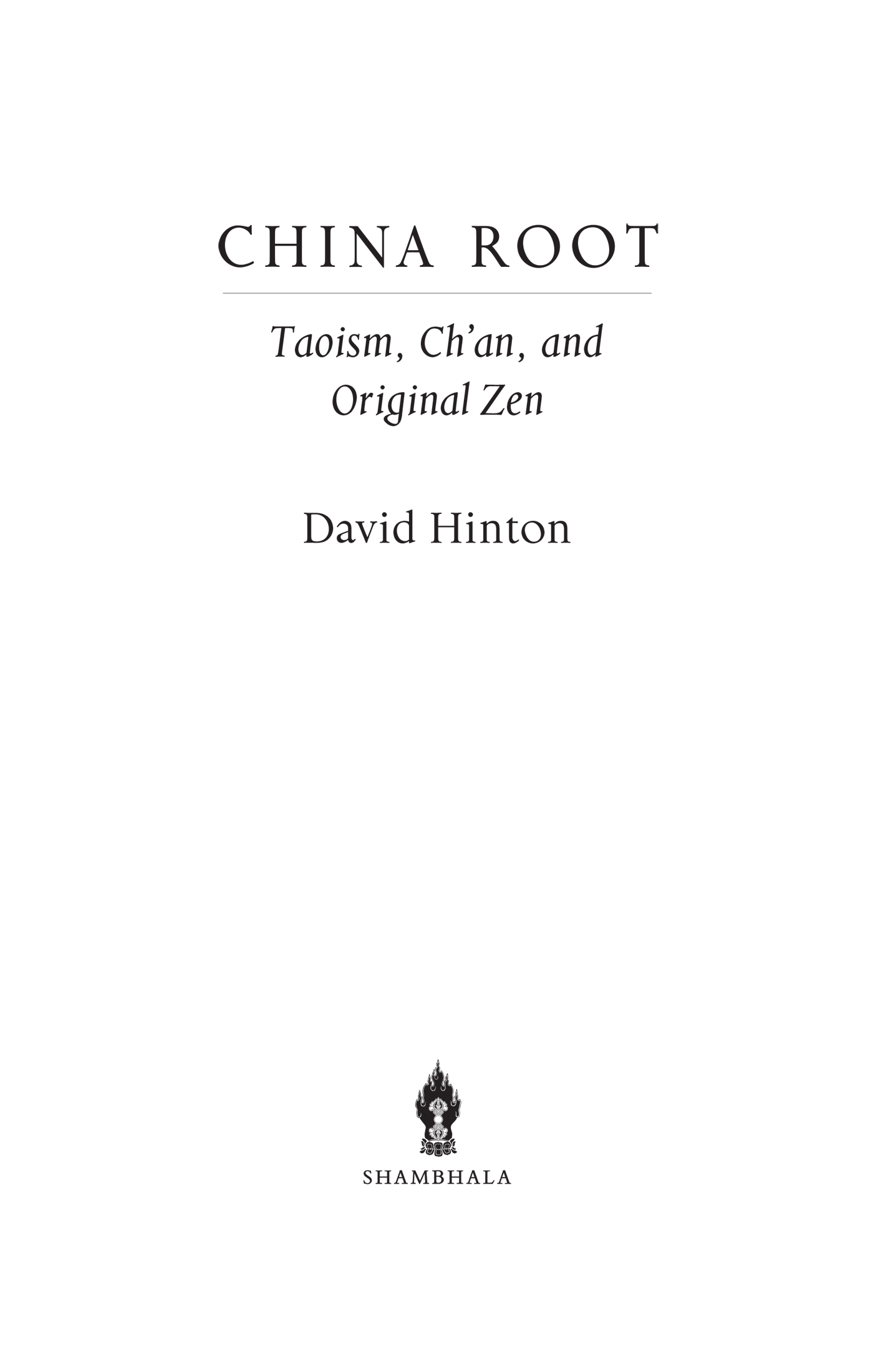
Shambhala Publications, Inc.
4720 Walnut Street
Boulder, Colorado 80301
www.shambhala.com
2020 by David Hinton
Cover art: Narcissus, Zhao Mengjian, mid-13th century, Ex coll.: C. C. Wang Family, Gift of The Dillon Fund, 1973
Cover design: Erin Seaward-Hiatt
Book design: Steve Dyer, adapted for ebook
Image on courtesy of Freer Gallery of Art, Smithsonian Institution, Washington, D.C.: Purchasefunds provided by the B. Rhodes and Leona B. Carpenter Foundation in honor of the 75th Anniversary of the Freer Gallery of Art, F 1998.27
All rights reserved. No part of this book may be reproduced in any form or by any means, electronic or mechanical, including photocopying, recording, or by any information storage and retrieval system, without permission in writing from the publisher.
L IBRARY OF C ONGRESS C ATALOGING - IN -P UBLICATION D ATA
Names: Hinton, David, 1954 author.
Title: China root: Taoism, Chan, and original Zen / David Hinton.
Description: First edition. | Boulder, Colorado: Shambhala, 2020. | Includes bibliographical references.
Identifiers: LCCN 2019056448 | Trade Paperback ISBN 9781611807134
eISBN 9780834843066
Subjects: LCSH : Zen BuddhismChinaEssence, genius, nature. | Zen BuddhismRelationsTaoism. | TaoismRelationsZen Buddhism.
Classification: LCC BQ 9262.9. C 5 H 72 2020 | DDC 294.3/9270951dc23
LC record available at https://lccn.loc.gov/2019056448
a_prh_5.6.0_c0_r1
PRAISE FOR
China Root
China Root is an utterly engrossing account of the deepest treasures the Zen/Chan path can open up, as it leads us into the manifest-yet-hidden wonders of who we really are. Hinton writes as very few can, not only as a scholar, practitioner, and translator but also as a poetsomething the old artist-intellectuals of China would surely have appreciated. His deep understanding of the Taoist roots of Chan shine a light on the Zen practice of today, taking us back in a thrilling way beyond the Japanese rigor and aesthetics, beyond the mythical Tang Dynasty flourishing of Chans great ancestors, back to its Taoist roots in the first millennium B . C . E .and even beyond them, into the mists of its paleolithic origins. It is here, back in its true rootswhich also happen to be the deepest aspects of our lifethat Hinton beautifully makes clear our participation in a generative cosmos, a constantly manifesting, burgeoning Presence, even while it never ceases to be a primordial Absence.
Oddly perhaps, in spite of Hintons expert parsing out of missteps in the translation and transmission of this Dharma to the West, I cant help feeling Ive just read a staggeringly good account of the modern Zen training a contemporary Japanese-based lineage led me through. Be that as it may, this thoroughly gripping book pulls together various threads of David Hintons prior work into one powerful, concise masterwork. May it echo through modern zendos for decades to come.
H ENRY S HUKMAN R OSHI , author of One Blade of Grass: A Zen Memoir
T HE PRIMARY PROJECT OF THIS BOOK IS A DIRECT AND philosophical one: to describe the native conceptual framework of Chan in ancient China, to make it available to contemporary philosophical understanding and spiritual practice. This native understanding and practice of Chan is largely missing in contemporary American Zen because that conceptual framework was mostly lost in Chans migration from China through Japan to America. Indeed, that conceptual framework appears already lost in Japan, for little trace of it appears in the writings of the great Japanese scholar D. T. Suzuki, whose many books introduced Zen to the Western world. The reasons for this are surely complex and beyond the scope of this book. But as a generalized beginning toward that understanding, it could be said that Japans cultural proclivity was toward paring things down to elegant essentials, a minimalist aesthetic defined by simplicity and order, stillness and emptiness. Japan sent an army of cultural figures to China beginning in the eighth century (just after the Sixth Patriarch) to master and bring to Japan all of Chinese culture: arts, philosophy, even the language itself. Over the centuries that followed, this adopted culture seems to have been pared down to its minimalist essentials in every field. Chinas poetry based on landscape images is purified in haiku to the briefest imagistic gesture. Much the same thing happened in painting, calligraphy, architecture, and even the tea ceremony, where a formalized ritual of tranquil emptiness replaced Chinas relaxed Taoist practice. An it appears much the same thing happened to Chan, its philsophically complex and messy earthiness giving way to clean framework of stillness and orderthe institutional Zen that migrated to America and Europe.
An unavoidable secondary task for this book is to document how the various aspects of Chans native understanding are misrepresented or altogether absent in the literature of American Zen. It is true that Chan/Zen is described as direct teaching from master to student outside of words and ideas. But again, the nature of such teachings and their goal of enlightenment is in fact defined by words and ideas, the conceptual framework within which they operateand that framework has little to do with original Chan. It would be impossible to examine the private teachings of all modern American Zen teachers, but the absence of original Chan in the entire literature of American Zen, including all books by Zen teachers, seems good evidence that it is absent from those direct teachings as well.
To avoid disrupting China Roots primary philosophical project, this secondary task is addressed in the Appendix. The near absence of original Chan in books about Zen (many by Zen masters) is a simple fact, and could only be documented by citing the entire literature. But Chans absence in contemporary Zen can be tellingly documented in the modern translations of original Chan texts (many also done by Zen teachers). The Appendix compares many of the translations in this book (all of them my own) with the standard translations that have shaped contemporary Zen, to show in detail how Chans conceptual framework is fundamentally misrepresented or simply lost in the translations. Translations that have comparisons in the Appendix are indicated with reference numbers.
On a larger scale, I have already translated the most widely used sangha-case (koan) collection, No-Gate Gateway (Wu Men Kuan), because it displays the whole Taoist/Chan conceptual framework especially well, using the root terms and concepts extensively. The intent was to show Chan returned to its native philosophical ground, a project that I explicitly address in the books introduction and apparatus. The distortions of previous translations can be seen by comparing passages of philosophical interest. And future translations will continue this reclamation of original Chan, including first a companion to this volume: a Sourcebook of Original Zen. This sourcebook will contain selections from Chans essential texts, thereby presenting Chans native conceptual framework in its own words. It will also trace China Roots historical argument through texts that show how Chans native conceptual framework begins not in Indian Buddhism but in the early Taoist texts, and how that framework evolved through proto-Chan texts and on into mature Chan.
Font size:
Interval:
Bookmark:
Similar books «China Root: Taoism, Ch’an, and Original Zen»
Look at similar books to China Root: Taoism, Ch’an, and Original Zen. We have selected literature similar in name and meaning in the hope of providing readers with more options to find new, interesting, not yet read works.
Discussion, reviews of the book China Root: Taoism, Ch’an, and Original Zen and just readers' own opinions. Leave your comments, write what you think about the work, its meaning or the main characters. Specify what exactly you liked and what you didn't like, and why you think so.

